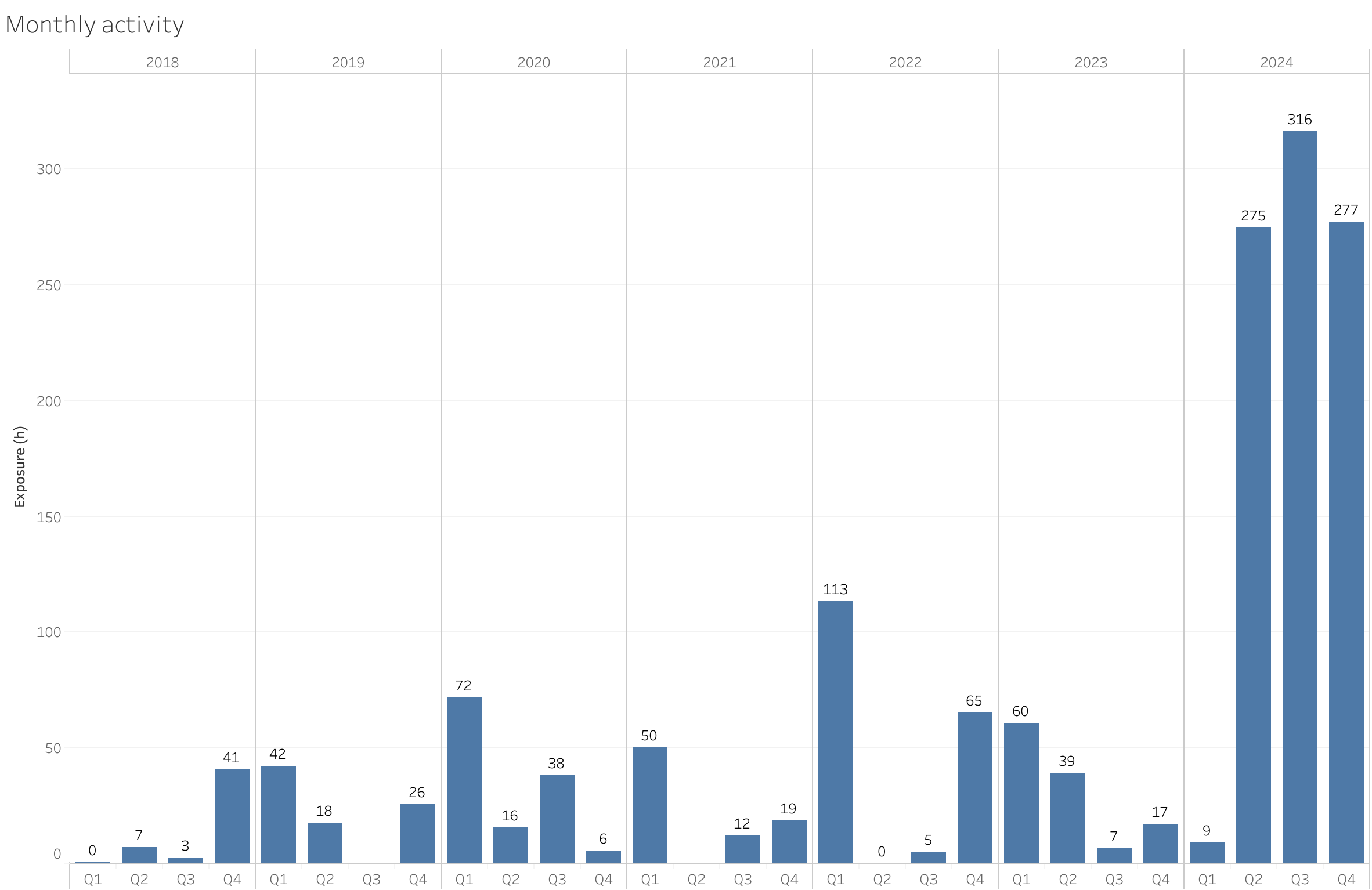Year in Summary 2024
The 39 images that were completed in 2024 and published on this website as well as my Astrobin page.
As the year ends, it's a good time to review our accomplishments. First of all, this year marked a significant step in my astrophotography hobby, the move to a remotely hosted observatory. On 12 March 2024, the installation of my CDK14 telescope at IC Astronomy in Oria, Spain was a fact. All preparations and details of the setup were written down in four blogs on this website.
After some getting used to running a telescope remotely, the fully automated imaging started to take off around April of 2024. And it has run remarkably well. The Robotarget Manager was able to ‘feed’ the system with targets, and a more or less optimised workflow ensured reviewing incoming subs and processing them into final images. The equipment worked flawlessly, with only one incident (the Planewave Delta-T…. of course….). The only other interruptions were site-related with a few power outages. The redundancy measures worked, and I was always able to get back into automated imaging without local intervention.
Mostly thanks to going remote, I was able to complete a total of 39 images this year. These include:
22 Messier objects, 4 Arp objects, 1 Caldwell object and 4 Sh2 objects
9 Star clusters, 15 galaxies, 6 planetary nebulae, 6 emission nebulae, 1 comet and 1 meteor
36 from the remote observatory, 1 from backyard, 1 during travel and 2 at a local dark site
The below graphs shows how the remote observatory affected the raw hours of exposure time. In the five years up to this point, the average number of exposure was 30h per quarter. During the three quarters in which the remote observatory has been in operation, this increased to 290h per quarter. That is an almost 10-fold increase in exposure time!
Total exposure time per quarter from the start of my astrophotography journey in 2018. The remote observatory caused an almost 10-fold increase in exposure hours.
The increased exposure time was used for two purposes: make longer exposures per image, and make more images. Where I typically photographed objects with an exposure of about 10h, now the exposure time has gone up to often over 20h per image. This allows for deeper images, with more detail also in the fainter areas. Secondly, more images are completed. I found that there are now realistic goals to be set to complete significant parts of, or even whole catalogues of images. For example, I now have photographed 43 of the 110 Messier objects, which is 39%. At the start of the year, that was only 21 objects, of 19%. Also I’ve started to make an inroad into the Arp catalogue and am completing images from the Sharpless and Caldwell catalogues.
With the main imaging now coming from the remote site, I wanted to re-purpose some of the equipment I’m using in the backyard. This is all still very much a work in progress, but to give some examples. The FSQ-106 setup has seen a small update with new mounting rings and autofocuser. But more importantly, since the Chroma filters went to the remote site, I had to get some replacement filters for the ASI6200M. This time I opted for the Antlia filters. The Mewlon-180 has been optimised for lunar/planetary work. The FOA-60Q has been equipped with a Ha-filter for solar imaging. And the FS-60CB based travel setup has been miniaturised for easier carrying around. And also I've started to dabble a bit into nightscape photography. The Sigma 15mm rectangular fish-eye lens that was used to capture the Perseids this year is an example of that. Besides the software dedicated to the remote site, no major changes in the software used. Although PixInsight has seen so many wonderful improvements, both by the original developers as well by independent developers making scripts and third-party tools that the application feels completely renewed.
From a communication point of view, I’ve been able to keep pace with publications of my new images on this website. Although I did make some changes to reduce the amount of work of creating the image detail page without loosing too much of its value. For the image processing workflow I use a simpler graphic and in the description of the processing I stay to the exceptions and assume that most of the default aspects can be retrieved from the graphic. Also behind the scenes I have updated some of the methods used to create the images, graphs and information. I’m very grateful for the continued increasing interest in this website. This year there were on average 2379 visitors/month, which was a nice 24% increase compared to 2023. Besides publication of the images, I created this year:
5 Newsletters. If you would like to receive those, you can subscribe here.
6 Blog posts (including this one)
6 News articles. There is a lot of news out there, so I restrict topics to the bigger ones and those that are important to me and my setups.
All in all 2024 was a very successful year for my astrophotography hobby. Now that you’ve reached the end of this blog-post, it means that you are genuinely interested in my work and this website, for which I’m very grateful. Hopefully this website can help and/or inspire you with your own astrophotography journey.

